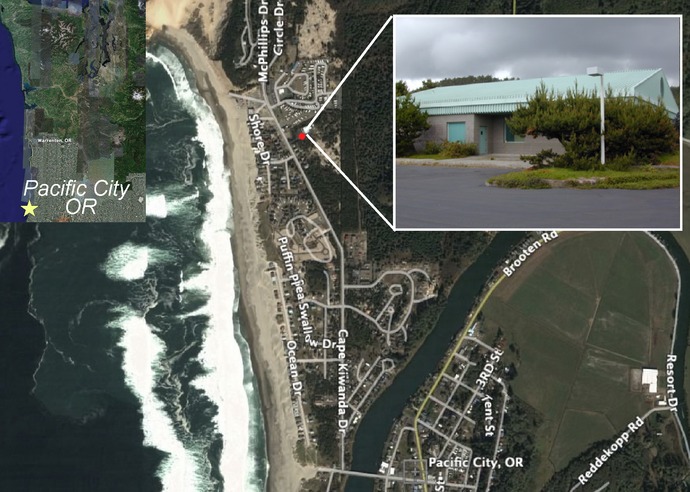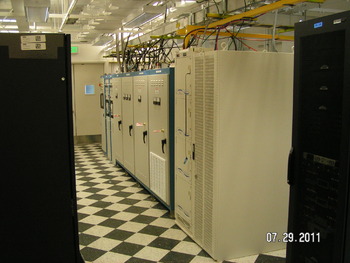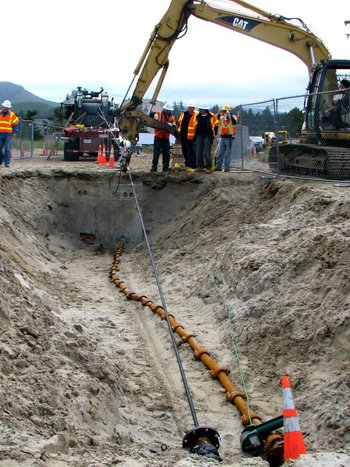The OOI RSN shore station in Pacific City, Oregon, is one of the most crucial parts of the cabled network. Here the two submarine electro-optical cables come ashore and are connected to terrestrial networks; here power and data connectivity pass between land and sea.
Power
AC power from the terrestrial grid comes into the shore station at 208 volts where it is stepped up to 480 volts and then run through power feed equipment that converts it to 10 kilovolts DC. About 8 kilovolts are distributed to each of the two OOI RSN cabled lines; the remaining 2 kilovolts go to a 1-kilovolt power load into each science port on each node and to the power needed for the nodes to function.
Data Connectivity and Control Systems
Communications bandwidth has a two-way capacity of 240 Gbits/second. Data coming in from instruments on the system will be routed from the shore station to a facility in Portland, Oregon, where it will be handed off to OOI Cyberinfrastructure for management and processing. Network operation and control data will be routed via redundant paths between the shore station and the University of Washington.
In addition to power and data connectivity, the shore station also hosts supervisory and control computer systems for the cabled network, as well as infrastructure management systems. Instrument control will reside with OOI cyberinfrastructure.
Why Pacific City?
A long-term lease on the shore station was finalized in May 2010, after several possible locations on the Oregon Coast were considered. The facility at Pacific City was selected because it met the OOI cabled network's needs of 1) proximity to areas of scientific interest, 2) an existing building structure, and 3) cable access to the ocean via a beach manhole and a conduit to the shore station. The site, which was once a shore station for North Pacific Cable, already had two backup generators, which are required to ensure the reduancy in providing uninterruptible power in case the terrestrial grid goes down.
The Pacific City facility was a cost-effective choice in part because of it was purpose-built in 1991 as the North Pacific Cable (NPC) subsea telecommunications cable station. NPC laid the first private undersea cable in the Pacific Ocean that provided connectivity between Oregon, Alaska, and Japan. NPC went bankrupt in 2005 and the station was still available when the OOI RSN began looking for a shore station. The local community and fishing industry, including the Oregon Fishermen's Cable Committee and the Pacific Dorymen's Association, were supporters of establishing the OOI RSN shore station at Pacific City. The lease agreement is with a local public-private partnership, Tillamook Lightwave.
Staffing
The scope of responsibilities and activities of the shore station require two full-time OOI RSN staff members. Their duties include routine and preventive maintenance, warranty management, repair coordination, and safety and power management when ships at sea are working on the system during installation or repair activities.




